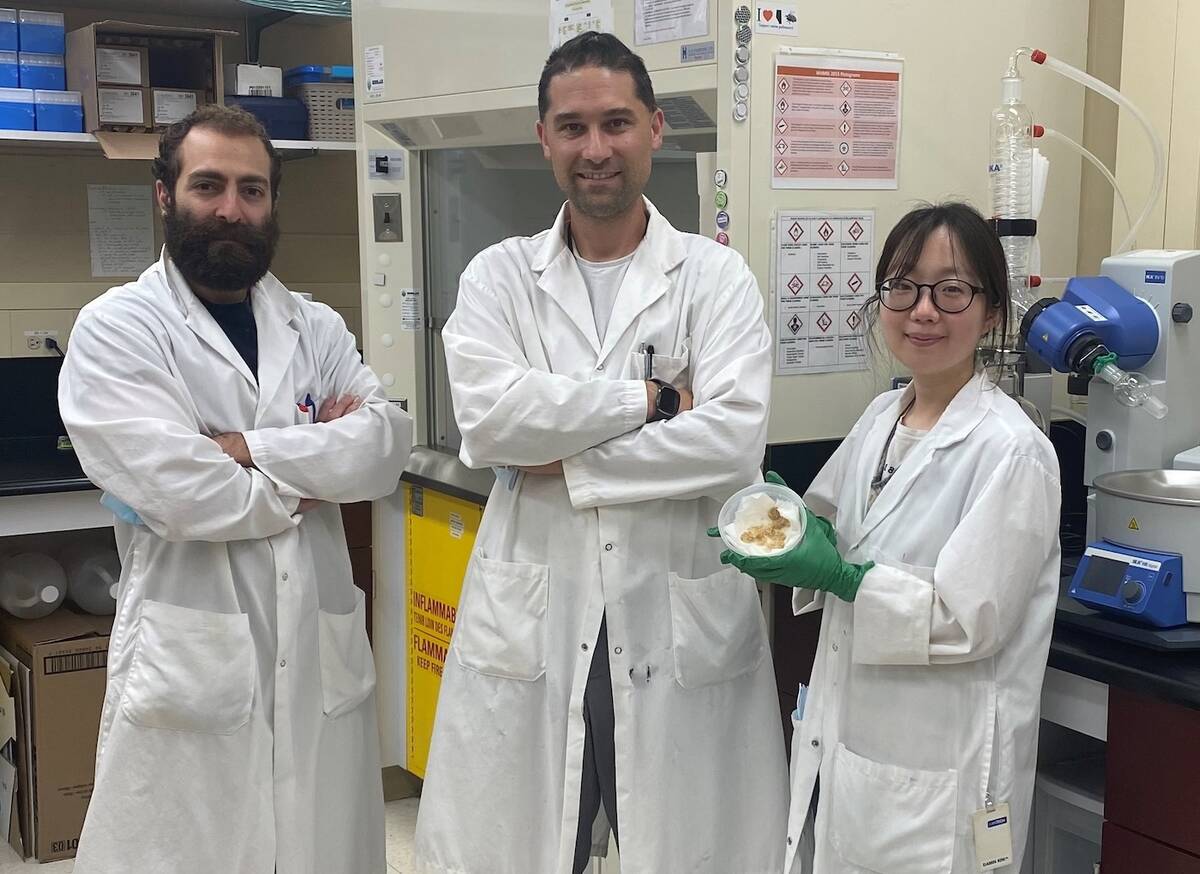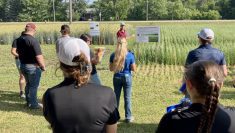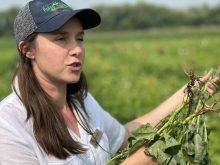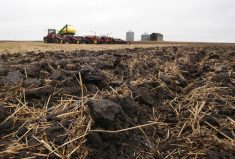A group of researchers, policy makers and producer organizations is repurposing part of a CBC transmission tower to get data on agriculture’s greenhouse gas emissions.
The tower at Yorkton, Sask., will be fitted with sensors to measure agricultural nitrous oxide emissions 100 metres above the ground.
Why it matters: The federal government wants to reduce nitrogen fertilizer emissions by 30 per cent below 2020 levels by the end of the decade.
Read Also

Nanotechnology used to develop genetic pest control
Researchers from Agriculture and Agri-Food Canada are working with nanotechnology and RNA to develop new pest insect control methods as an alternative to chemical spray on crops.
The group, dubbed CanN20net, held its inaugural meeting in October 2024. Armed with $8 million in funding from the Natural Sciences and Engineering Research Council of Canada, it aims to conduct nationwide studies on N2O emissions, develop better metrics to track reductions and create a path for scaling up nitrogen management practices.
Henrique Carvalho, an assistant professor in the department of soil science at the University of Manitoba, is a principal investigator for CanN2Onet and the lead for the Regional (Tall) Tower project at Yorkton. He described the project as a means to close data gaps on managing agricultural N2O emissions.
“We all know that nitrous oxide is important in agriculture, and there are many ways that we can try to mitigate some of those emissions,” he said. “But we definitely lack a number of metrics that can help us identify the practices that really can be effective.”
By placing sensors 100 metres in the air, the team can assess average emissions across all fields within a large radius.
The team will use results from those sensors to compare how expectations from the impact of ground-level best management practices match the reality and if they don’t match, how those recommended practices can be adjusted.
“We refine the models so that when we apply that to the grower scale, we are very confident that that model is really good,” Carvalho said.
International inspiration
Europe and the U.S. have used tall towers to monitor N2O for about a decade but the Yorkton tower project will be the first of its kind in Canada.
The tower’s coverage radius will span hundreds of kilometres over a few months. In the longer term, however, Carvalho expects accumulated data over a series of years will allow one tower to report at a continental scale.
Once operational, it will join a network of similar towers across the American Midwest, including Minnesota, Iowa, Illinois, Missouri and Arkansas, to further expand the project’s scope.
Credit where due
Beyond boosting policy makers’ confidence in their models, the project could credit farmers for actions that ground-level monitoring now overlooks.
Erin Daly, project manager for CanN2ONet, said a large portion of the project is dedicated to giving credit where it’s due. Very few results from best management practices are captured by the national inventory report, the official benchmark for greenhouse gas emissions in Canada, she noted.
“This is a way to actually develop those metrics and incorporate them into the national inventory report,” she said. “So instead of being prescriptive and saying, ‘this is what you need to do,’ a huge part of the project is capturing what farmers are already doing and acknowledging that and incorporating those good practices into that national inventory report.”
The first steps to set up the tower were completed when the group secured a licence agreement with CBC. The next step is hiring riggers to climb the tower and install the intakes and infrastructure to pull air samples for analysis.
“Right now it’s not possible for the riggers to do the installation. Because of the weather conditions, it’s not safe,” said Carvalho.
He expects to have the station running by the middle of next year.
















